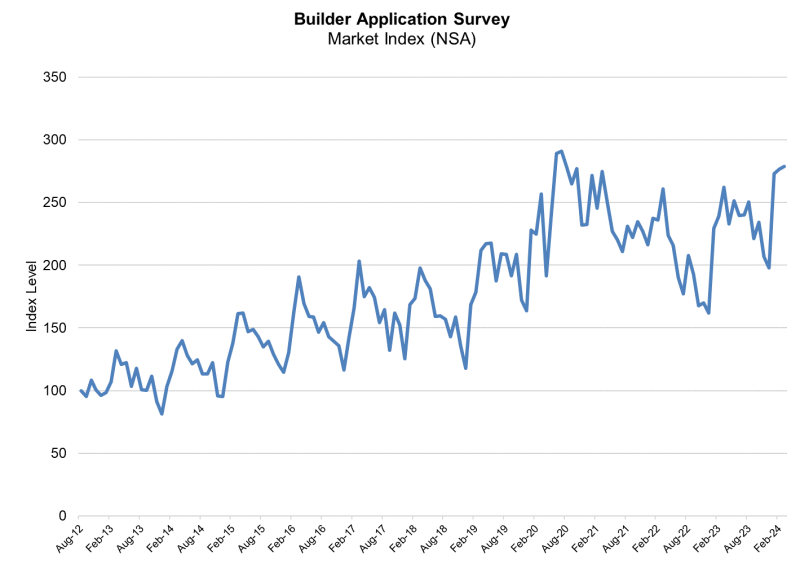Advertisement
Metrostudy: Economic conditions continue to pressure Twin Cities housing market

“The housing market appears to be bouncing along a ‘sloppy bottom.’ Month-to-month volatility makes it difficult to see a clear direction for the industry,” said Mike Inselmann, president of Metrostudy, a national housing market research firm. “The annualized rate of existing single-family home sales has moved up slightly to 4.2 million for April and May from 4.1 million in the first quarter. As painful as it is to see the high volume of sales of foreclosed homes and short sales in these numbers, it is serving to shrink inventory, a first step in getting the market in balance.”
New-home sales trends are similar to that of existing homes, with the second quarter showing minor improvement. However, reducing inventory is the primary focus of the building industry in all markets across the country. Builders continue to negotiate a minefield of countervailing factors. Tax credits, low interest rates and attractive pricing encourage buyers to act, but the economy and fear of job loss and home price declines give them reason to sit on the sidelines.
“As builders focus on inventory reduction, many markets will be in a much more balanced state by the end of the year, and may face a much improved outlook by January of 2010,” Inselmann said.
“The Twin Cities market, a 13-county area, lost more than 69,800 jobs during the 12 months ending in June 2009, a job loss rate of 3.9 percent,” said Ryan Jones, director of Metrostudy’s Twin Cities division.
According to The Minnesota Department of Employment and Economic Development (DEED) the Twin Cities’ seasonally adjusted unemployment rate was 8.5 percent at the end of the second quarter, compared to Minnesota’s unemployment rate of 8.4 percent and the national rate of 9.5 percent (seasonally adjusted). Economists generally consider an unemployment rate of 5 to 5.5 percent as full employment.
“Unprecedented weakness in the local economy has impacted the housing market. While more job losses are expected, the loss rates should begin to ease, bringing some much-needed relief to our strained economy. Positive or even less negative signs should result in improved consumer confidence, which could trigger housing demand. However, it is too early to call a bottom, as there are still many challenges to face,” Jones said.
The existing-home market in the Twin Cities continues to play a pivotal role in the struggles facing the new-home market, Jones said. “With home values declining, many buyers and sellers have taken a wait-and-see approach. However, a recent uptick in sales figures indicates households are finally taking advantage of low prices, low mortgage interest rates and the $8,000 first-time buyer tax rebate. While there is still a glut of lender-mediated homes on the market, the overall numbers continue to decline and supply remains below eight months, significantly lower than this time last year.”
Figures released in June by the Minneapolis Area Association of Realtors show that, through June, active listings had declined 15 percent, closed sales had increased 10 percent and pending sales, an indicator of future sales, had increased 20 percent. Increased demand and tighter supplies should begin to translate into more stable home values, Jones said.
The decline in new-home activity continues to put significant pressure on builders, developers and lenders throughout the Twin Cities, Jones said.
During the second quarter of 2009, there were 801 new-home starts, a decline of 32 percent compared to the second quarter of 2008.
There were 3,212 new-home starts recorded during the 12 months ending in June 2009, a decline of 43 percent compared to the annual starts recorded in June 2008. Construction of new homes will likely continue to be slower compared to last year, Jones said, as builders try to keep inventory levels low. The Twin Cities housing market will likely have 3,000 to 3,500 new-home starts during 2009.
Closings, although lower than previous years, continue to outpace starts. A total of 1,112 new housing units closed during the quarter, a 45 percent decline from the second quarter of 2008.
Annual closings totaled 5,245 through the second quarter of 2009. Jones said that closings were slightly lower than expected, possibly the result of a longer approval process for securing financing. Jones said this closings rate does not necessarily indicate a lack of demand. Closings activity could begin to level out toward the middle of the year as potential homebuyers begin re-entering the market.
Annual new-home closings continued to improve in the core seven-county metro area. Annual closings activity in Hennepin, Ramsey, Anoka, Carver, Scott, Washington and Dakota counties declined 36 percent compared to the rate posted a year ago, Jones said.
“The Twin Cities’ largest and most active county, Hennepin, recorded a 26 percent decline in annual closings compared to last year. When demand begins to pick up during the next two years, the recovery will occur first in the seven metro counties as more households move closer to core cities,” Jones said.
Total new-home inventory declined 35 percent from the second quarter of 2008, to 3,753 units. Under-construction inventory (1,632 units) accounted for 44 percent of total inventory. Finished vacant inventory (1,631 units) comprised 43 percent of total inventory. Model homes (490 units) comprised the remaining 13 percent.
As the closings pace continued to decline, total housing inventory increased to more than eight months of supply for the first time in six months. Metrostudy expects supplies will drop down closer to eight months in the third quarter.
Although still elevated, the supply of finished vacant homes declined to a 3.7-month supply. “This is the second consecutive quarter in which finished vacant supply levels recorded a year-over-year decline,” Jones said. Metrostudy uses finished vacant inventory to monitor the health of housing markets.
At the end of the second quarter, there were 33,626 vacant developed lots on the market, a 10-year supply. Although the total number of vacant developed lots is declining, supply levels have increased for 20 consecutive quarters. With a continued decline in new-home activity expected for at least two more quarters, lot inventory is not likely to decrease until the end of 2009 or early 2010, Jones said.
“While home prices are likely to remain unstable through the end of the year, significant price declines should ease, making home selling and buying easier. The backlog of new-home inventory is moving closer to equilibrium, and the existing-home market is picking up steam. This good news, in combination with low mortgage rates and the expiring $8,000 tax credit, should help the Twin Cities housing market finally begin to see signs of a recovery,” he said.
For more information, visit www.metrostudy.com.
About the author





